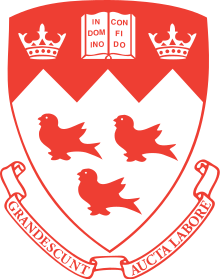Part 1: Sounds and Spelling
Let’s start by going over the letters in the alphabet. These fall into groups of consonants and vowels:
| k | kw | s | r | w | i | h | n | t | ts | ‘ |
| a | e | i | o | en | on |
r
The letter r can be pronounced differently depending on dialect. Part 4 discusses this variation in more detail. In the examples below, it will be pronounced as an L.
| Letter | Kanien’kéha Example | Audio | English Example | Note |
| r | rotshénhton | leaf | Varies by Dialect |
‘
The symbol ‘ represents a glottal stop. This is the sound occurs in the English expression “uh-oh”: it is the “break” or “catch” in between the two syllables.
| Letter | Kanien’kéha Example | Audio | English Example |
| ‘ | ionttsi‘tsahninón:tha | uh–oh |
i
You may notice the letter i/i appears in both the consonant and vowel category. This is because it is pronounced like the letter Y before another vowel, and like a vowel otherwise.
| Letter | Kanien’kéha Example | Audio | Context | English Example |
| Consonant i | iah | Before a vowel | yes | |
| Vowel i | tsi | Not before a vowel | meet |
Some dialects may represent these two types of i differently in writing. Part 4 discusses this in detail.
en and on
The vowels en and on are nasalized. This means they are pronounced with an “n-like” quality. on might sound like the vowel in English “soon”, without actually pronouncing the n. Because of this nasality, they are written with an n.
| Letter | Kanien’kéha Example | Audio |
| en | rotshénhton | |
| on | rotshénhton |
Notice that this means the letter n will sometimes be a part of the vowel, and will not be pronounced on its own. As a rule of thumb, if it occurs before a vowel or at the start of a word, it is the consonant n. If it occurs before a consonant or at the end of a word, it is part of the nasal vowel en or on.
| Letter | Kanien’kéha Example | Audio | Context |
| Consonant n | nikattókha | Start of a word or before a vowel | |
| Nasal Vowel en | atátken | End of a word or before a consonant |
There may be some cases where the form is ambiguous, such as in the word tehotténion.
| Letter | Kanien’kéha Example | Audio |
| Consonant n | tehotténion | |
| Nasal Vowel en | tehotténion |
These cases are rare, and can usually be determined using other information. For example, in this case, the fact that the stressed vowel is short means that the sequence must be énion, with a consonant n. Part 3 discusses stress in more detail.
k, t, and s
k, t, and s may be pronounced differently depending on their position in a word. Watch the following video to learn more:
With all that in mind, here is a complete table of all the sounds you’ve just learned, with examples in Kanien’kéha. There’s also a column with the sound represented in the International Phonetic Alphabet (IPA). Click here for an interactive chart of IPA sounds.
| Kanien’kéha Letter | Kanien’kéha Example | Translation | Audio | IPA |
| a | atátken | mirror | [a] | |
| e | shé:kon | hello | [e] | |
| i | ohì:kta | thorn | [i] | |
| o | ohì:kta | thorn | [o] | |
| en | rotshénhton | he is weak | [ʌ̃] | |
| on | rotshénhton | he is weak | [ũ] | |
t | tehotténion | he changes | [d] | |
| thotshón:waien | he has an earth hole over there | [t] | ||
k | nikattókha | I am wise | [g] | |
| nikattókha | I am wise | [k] | ||
s | satkonhsóhare | wash your face | [z] | |
| shé:kon | hello | [s] | ||
| kw | ahkwesáhsne | Ahkwesahsne | [gʷ] | |
ts | tsóhsera | one year | [dz] | |
| thotshón:waien | he has an earth hole over there | [ts] | ||
| h | Ahkwesáhsne | Ahkwesahsne | [h] | |
| ‘ | ionttsi‘tsahninón:tha | florist | [ʔ] | |
| r | rotshénhton | he is weak | [l] | |
| n | nikattókha | I am wise | [n] | |
| w | wa’keronwaróhtshi | I remove nails | [w] | |
| i | iáh, takkwén:ni | “No, I can’t” | [j] |
Jump to:
